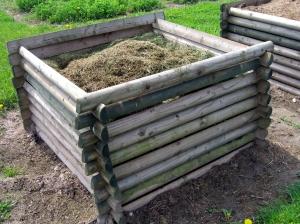How to prepare compost?
1. Locate your composter on bare soil. Somewhere in your garden that is easily accessible all year round.
2. You should mix your Green and Brown materials evenly when composting. Greens are soft, wet materials like grass cuttings, vegetables and fruit scraps. Browns are harder, dryer materials like hedge trimmings and strips of cardboard.
3. When composting you should put a lot of materials in all at once. Chop large items into smaller pieces to help with the process. Try to ensure that your compost is moist but not wet – when squeezed in your hand, a few drops of water should be produced. Add water if it is too dry; cover and add dry material if too wet.
4. If you wish, add compost accelerator (young nettles are an excellent natural accelerator) to help speed up the composting process.
5. Keep adding materials, remembering to agitate the contents every couple of weeks throughout spring and summer to keep air flowing through.
6. Your compost is ready when it is dark in colour and smells like earth. This can take from 6 to 18 months depending on the materials used and the time of the year.
What can you compost?
- Grass Cuttings
- Hedge Cuttings
- Vegetable Peelings
- Tea Bags
- Coffee Grounds
- Ripped Cardboard & Paper
- Fruit Cuttings
What can you not compost?
- Meat, Fish or Cheese
- Coal ash
- Cooked Left Overs
- Metals, Glass or Plastic
- Nappies
http://www.torfaen.gov.uk/EnvironmentAndPlanning/RubbishWasteAndRecycling/Composting/Home.aspx
